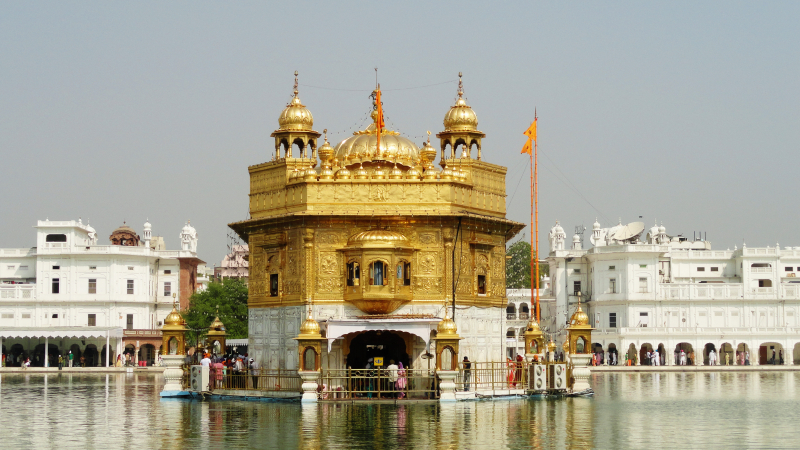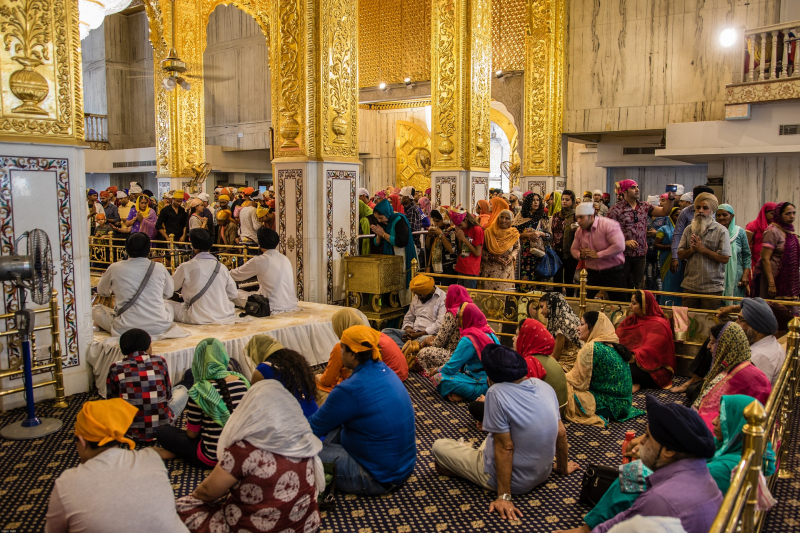Gurdwara is the Sikhism place of worship
Sikhs worship in a structure called a gurdwara, which literally means "the door that leads to the guru". Every Gurdwara holds a copy of the Sikh holy book, the Guru Granth Sahib. In fact, the presence of the Guru Granth Sahib is what gives the gurdwara its holy status; hence, any building that houses the Guru Granth Sahib is considered a gurdwara.
The Guru Granth Sahib is always kept in the main hall of the gurdwara (the diwan hall) and is regarded with reverence and respect. When not in use, it is placed beneath a canopy on an elevated platform and is always covered with cloth. At the end of the day, it is transferred to a separate room known as the Sach Khand, where it is kept overnight.
Before entering a gurdwara, Sikhs remove their shoes, wash their hands, and cover their heads. They then move towards the Guru Granth Sahib and kneel and bow in front of it, their foreheads touching the floor. They may also provide a food or monetary offering.
- In a gurdwara, there are no images, statues, bells, or candles. This is due to Sikhs' belief in a single God who does not have a bodily form.
- There is no anticipation that Sikhs will attend the gurdwara. There is no specific holy day for the Sikh religion; however, Sikhs in the UK choose to go once a week, on a Sunday, to coincide with the working week. Many Sikhs in India attend the gurdwara before going to work.
- There are four doors in each gurdwara: the Door of Livelihood, the Door of Peace, the Door of Learning, and the Door of Grace. This is to demonstrate that everyone is welcome.
- Gurdwaras are community centers that serve free meals from a "langar," or kitchen, as well as a space for religious events and for youngsters to learn about Sikh customs and traditions. This dish is vegetarian in order to meet the nutritional needs of everyone.
- There are no cushions or chairs in a gurdwara; everyone sits on the floor.
- There are no ordained priests in the Sikh religion, and any Sikh can lead services and read from the Scriptures.
- Daily morning services begin with hymn singing and are followed by a sermon and prayers. Following the service, food is served.
- The Sikh flag is flown outside Gurdwaras. The Sikh flag, known as the Nisham Sahib, is a triangular orange or yellow flag with the Sikh emblem, a Khanda (a double-edged sword, circle, and two crossed kirpans or swords) in blue.
- In a gurdwara, a light is always left on to symbolize that the guru's light is available to anyone at any time.











